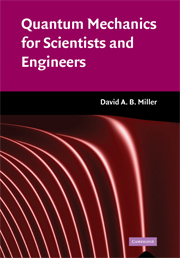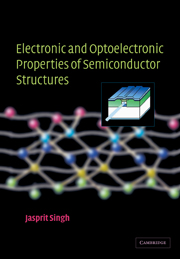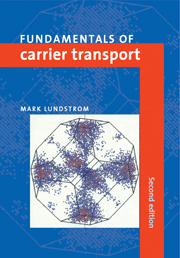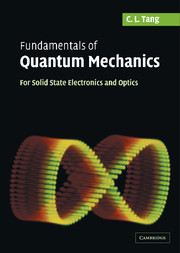Quantum Mechanics for Scientists and Engineers
If you need a book that relates the core principles of quantum mechanics to modern applications in engineering, physics, and nanotechnology, this is it. Students will appreciate the book's applied emphasis, which illustrates theoretical concepts with examples of nanostructured materials, optics, and semiconductor devices. The many worked examples and more than 160 homework problems help students to problem solve and to practise applications of theory. Without assuming a prior knowledge of high-level physics or classical mechanics, the text introduces Schrödinger's equation, operators, and approximation methods. Systems, including the hydrogen atom and crystalline materials, are analyzed in detail. More advanced subjects, such as density matrices, quantum optics, and quantum information, are also covered. Practical applications and algorithms for the computational analysis of simple structures make this an ideal introduction to quantum mechanics for students of engineering, physics, nanotechnology, and other disciplines. Additional resources available from www.cambridge.org/9780521897839.
- Relates the core principles of quantum mechanics to engineering, physics and nanotechnology applications through examples of nanostructured materials, optics, and semiconductor devices
- Help with problem solving and the application of theory is provided through many worked examples and more than 160 homework problems
- Algorithms for the computational analysis of simple structures are included
Reviews & endorsements
'This is an excellent introductory-level textbook on quantum mechanics for physicists and engineers. … The author is a leading expert in quantum devices and he writes the text with remarkable clarity and authority. It is highly recommended.' Shun-Lien Chuang, University of Illinois
'I think this is an excellent book. It will become my standard reference for text for quantum mechanics and I will expect to see it on the shelves of my PhD students as well as undergraduate students. If students want to find one book that that will serve as both an introductory and future reference text on quantum mechanics, condensed matter and quantum optics they should buy this one.' Gareth Parry, Imperial College London
Product details
June 2008Hardback
9780521897839
568 pages
260 × 183 × 32 mm
1.15kg
73 b/w illus.
Available
Table of Contents
- How to use this book
- 1. Introduction
- 2. Waves and quantum mechanics – Schrödinger's equation
- 3. The time-dependent Schrödinger equation
- 4. Functions and operators
- 5. Operators and quantum mechanics
- 6. Approximation methods in quantum mechanics
- 7. Time-dependent perturbation theory
- 8. Quantum mechanics in crystalline materials
- 9. Angular momentum
- 10. The hydrogen atom
- 11. Methods for one-dimensional problems
- 12. Spin
- 13. Identical particles
- 14. The density matrix
- 15. Harmonic oscillators and photons
- 16. Fermion operators
- 17. Interaction of different kinds of particles
- 18. Quantum information
- 19. Interpretation of quantum mechanics
- Appendices: A. Background mathematics
- B. Background physics
- C. Vector calculus
- D. Maxwell's equations and electromagnetism
- E. Perturbing Hamiltonian for optical absorption
- F. Early history of quantum mechanics
- G. Some useful mathematical formulae
- H. Greek alphabet
- I. Fundamental constants
- Bibliography
- Memorization list.





